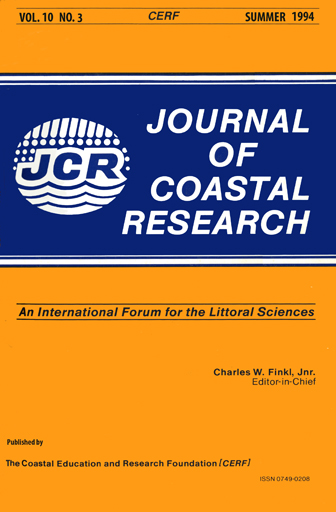Spatial Heterogeneity and Seasonal Patterns in a Tropical Coastal Lagoon
Keywords:
Multivariate analysis, salinity, nutrients, groundwater, tropical lagoonAbstract
This study using multivariate statistical approaches describes the hydrology of a tropical coastal lagoon which IS markedly affected by the infiltration of cold nutrient-rich groundwater discharges. Based on the results of cluster analysis, three different zones are distinguished in the lagoon. The inner zone is characterized by low salinity, high nitrate (40 μM) and soluble reactive silica concentrations (> 200 μM). This zone is strongly affected by groundwater discharges. The seaward zone is characterized by high salinity and a low concentration of nutrients. The middle zone is characterized by intermediate values of salinity and higher concentrations of soluble reactive phosphorus (3-9 μM) and ammonium (10-15 μM) than those found in the rest or the lagoon. Principal Component Analysis was applied to data collected during each season. The major components or variability in the data were associated with groundwater inputs and internal processes such as the mineralization of organic material. The first principal component of the variability was indicated by the salinity gradient, nitrates, and soluble reactive silicate levels, and the second by soluble reactive phosphorus and ammonium. The hydrological dynamic of the Celestun Lagoon was highly influenced by the intensity and Frequency of prevailing climatic conditions coupled with biogeochemical processes.


